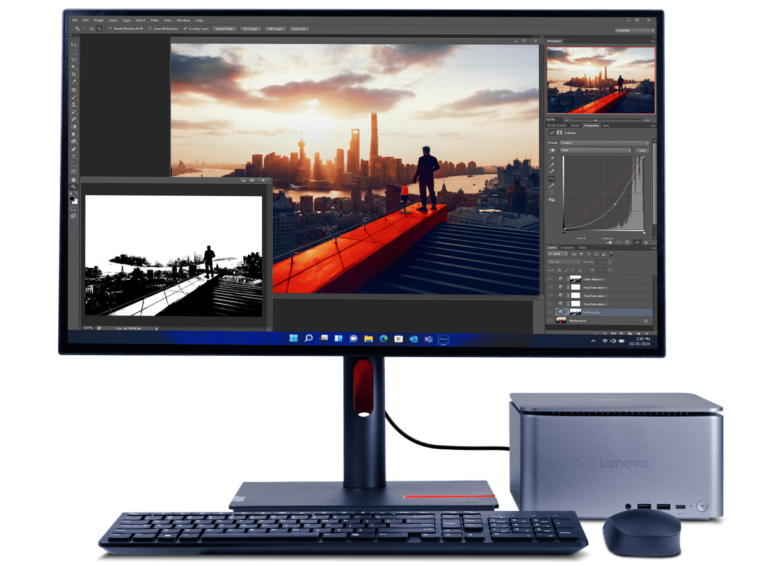First announced at CES 2024, the Lenovo ThinkCenter Neo Ultra is the company’s first ultra-small form factor desktop targeted at small and medium-sized businesses that want to harness the power of AI without spending a lot of money.
When it was first announced, we knew the device would have an Intel Core i9 processor, but not which one. We also knew it would have an Nvidia RTX 4060 GPU and up to 64GB of DDR5 RAM.
Lenovo has filled the spec gap with the launch of the ThinkCenter Neo Ultra, allowing buyers to choose from a range of 14th Generation Intel processors, from the i5-14500 to the i9-14900T. Unfortunately, no AMD versions are offered.
Available now in Australia
The 195 x 191 x 108mm (3.6L) ThinkCenter Neo Ultra is loaded with ports, as expected. The front includes two USB-A ports (USB 10Gbps / USB 3.2 Gen 2) (one of which supports 5V@2.1A charging), a headphone/microphone combo jack (3.5mm), and a USB-C port (USB 20Gbps / USB 3.2 Gen 2×2) dedicated to data transfer. The rear panel features two USB-A ports (USB 10Gbps / USB 3.2 Gen 2), two USB-A ports (USB 5Gbps / USB 3.2 Gen 1), an HDMI 2.1 TMDS port, an Ethernet (GbE RJ-45) port, an HDMI 2.1a FRL port, and four DisplayPort 1.4a ports.
There are optional punch-out rear ports, the first punch-out can be configured with VGA (reuse your old CRT monitor), DisplayPort, HDMI or USB-C with DisplayPort capability, and the second punch-out can be configured with either VGA, DisplayPort, HDMI or 2.5GbE RJ-45.
It has Wi-Fi 6E and Bluetooth 5.3, comes with four M.2 slots (one for WLAN, one for an AI card, and two for SSDs), and the system also comes with up to four thermal fans for cooling, one more than the original specs indicated.
For now, the ThinkCenter Neo Ultra is only available in Australia, where it costs AUD 3,299 ($2,223) for the standard configuration with an i5-14500 CPU, RTX 4060 GPU, and 16GB DDR5 RAM. That’s roughly the same price as an Apple Mac Studio with the M2 Max. We’ll no doubt see it available in other territories in the coming months. Interestingly, the model is dubbed “Gen 1,” suggesting that Lenovo plans to roll out an updated version in the future.
View


